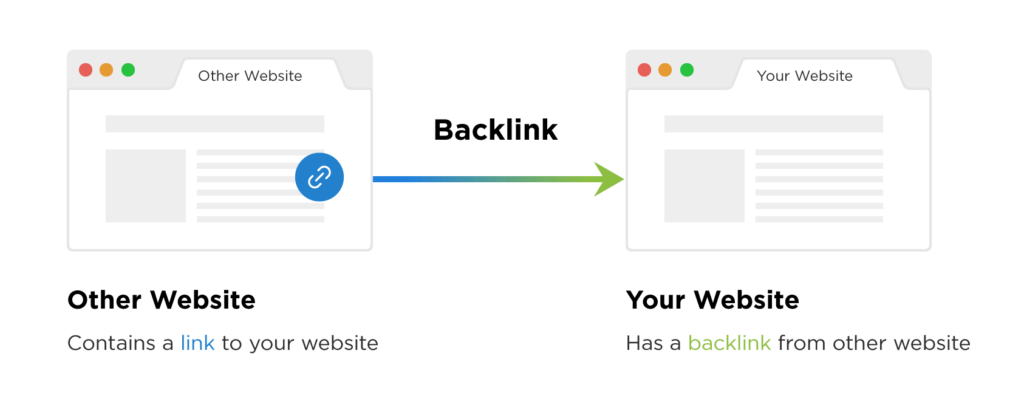It’s no secret that backlinks remain one of the most important ranking factors in SEO, and so link building remains the core activity of any SEO strategy.
How to Start a Link Building Campaign? Share on X
Link building is, simply put, the process of acquiring links from third-party websites. However, since Google also determines the quality of your backlinks, acquiring links from high-quality and authoritative sites can be challenging. While there are various techniques we can use in building our links, many SEO practitioners would agree that link building is the hardest part of any SEO strategy.
With that being said, in this guide, we will discuss how we can start a link building campaign effectively, and by the end, you can use these tips to put yourself ahead of other SEO practitioners and your competitors.
How to Start a Link Building Campaign

1. Figuring Out Your Content’s Hook
You won’t be able to generate any links at all unless you have the assets that will attract people to link your content. We call this asset your ‘hook’.
Unless there’s something worth linking in your content, people won’t link it, period, and these hooks can vary from content to content and from business to business. You need to identify the hooks of your existing content, as well as planning the hooks for your future content.
Your hook can be:
- The content itself (if it is a moving story, inspirational content, etc.)
- Unique data or information (research report, statistics, infographics, etc.)
- Information about product or service
- Information about certain people
- Aesthetically-pleasing content (I.e. photos or infographics).
Technically, money can be your hook (that is, paying other sites to link you), however, keep in mind that buying links is considered illegal by Google, and your site might get penalized from buying and selling links. So, we would advise against using money as your hook.
2. Determining The Quality of Link Sources
Above, we have discussed how the quality of the incoming links is just as, if not as important than quantity. Link building isn’t only about reaching out to as many websites as possible and getting as many low-quality links. Instead, you should focus on getting links from high-quality, relevant websites in your long-term strategy.
So, how can we determine the quality of our link sources? Here are a few important factors to consider:
- Page Authority and Domain Authority: links from sites with a higher PageRank will provide more value to your SEO performance. Obviously links coming from famous websites (think nytimes.com) would definitely be more valuable than links coming from a brand new website.
- Relevance: even if a website is popular and famous, doesn’t mean it will provide value for your website if it’s not relevant. For example, if you are a digital marketing site, getting a backlink from golf.com is typically not considered relevant.
- Dofollow link: only links without nofollow tag are considered as votes/endorsements, so always make sure that you are getting dofollow links
- Content: the overall quality published on the site matters, as well as the content’s relevance for your own. For example, even if a website has a high page authority but there aren’t too many content pieces, it might not be considered as high-quality
3. Identifying Your Link ‘Targets’
Once you’ve figured out your content’s hooks and how to determine the link source’s quality, We can figure out our link targets via several approaches:
- Consider your content’s subject
Your link targets should vary depending on your content, and the general rule is that you should target authoritative sites related that might be interested in this specific content. For example, if your content is about SEO, then you can target digital marketing websites/blogs as your link sources.
- Look out for curated lists
For example, this is a great list listing the top marketing blogs at the moment, so if you are publishing digital marketing content, all the blogs in this list can be your link targets. So, you can Google for lists like this depending on your niche.
- Competitive analysis
You can use tools like Ahrefs or SEMRush that can analyze a website’s link profile for this approach. Analyze your competitor’s link profile and list the websites giving them links. Chances are, they are also excellent link targets for your brand. This is a great approach not only to find link building opportunities, but also to check for content gaps.
There are many other techniques and advanced methods you can use, but the general idea is to build a list of high-quality websites that are relevant for your content.
4. Plan Your Outreach Strategy
Just because you’ve defined your target websites, doesn’t mean that they are going to automatically link your content. Different target websites might require different strategies: some might link your content as long as they see its value, some others might only link websites they already have relationships with, and so on.
In most cases, link building is also relationship-building: you shouldn’t only outreach to websites and ask them for links, but you should first build a genuine, lasting relationship.
Start prioritizing your target, and generally, you’d want to start with high-quality, famous websites since they can also serve as social proof when you outreach to smaller influencers and websites.
Research the individual target carefully, and personalize your pitch based on this research. Also, you can always begin by first linking their content. Be concise and to-the-point with your outreach emails or posts, and always keep in mind that you are asking for a favor and they don’t really owe you anything.
You might not get a lot of replies with your outreach email, and that’s not a problem. You can always follow up after a week or so, which will also tell them that you are a real person. Obviously you will get negative replies every now and then, but keep in mind to always reply to them with a positive attitude and don’t ignore them (and don’t ever insult them). You’ll never know that they might be better opportunities to outreach to them in the near future.
End Words
While link building for SEO might seem intimidating at first, it is actually pretty simple once you’ve got the hang of it: above all, however, the key to a successful link building is to have high-quality, relevant content in the first place. If your content is good and is promoted well, you will always get the valuable backlinks sooner or later. On the other hand, no amount of link building techniques can help low-quality, spammy content.
Recommended Read:
AFFILIATE MARKETING: 7 PROVEN WAYS THAT WORK
10 TIPS FOR IMPROVING SEO CONTENT IN 2020
HOW GRAPHIC DESIGN BOOSTS YOUR MARKETING STRATEGY
General FAQs
Backlink strategies have been an important part of online marketing for a long time now. They help improve your website’s traffic, rank, reputation, and even relationships. Though the effectiveness of quality backlinks to your site has not changed, the methods in which you get them has.
Backlinks are an essential part of SEO process. They help search bots to crawl your site and rank it correctly to its content. Each backlink is a part of a ranking puzzle. That’s why every website owner wants to get as much as possible backlinks due to improving website’s SEO ranking factors.
Backlinks occur when one website mentions another website and links back to it. Also referred to as incoming or inbound links, backlinks make their connection through external websites.




